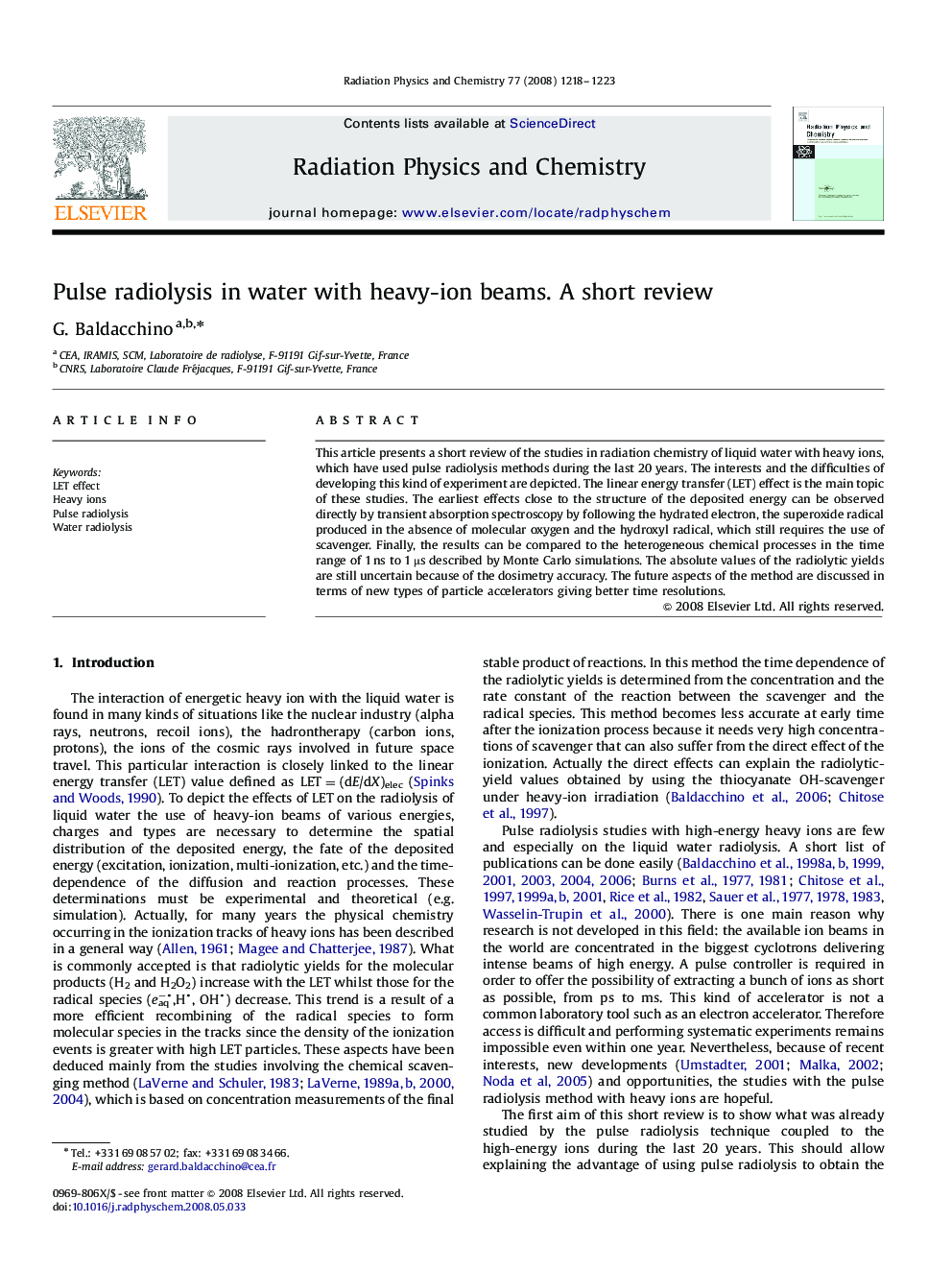| Article ID | Journal | Published Year | Pages | File Type |
|---|---|---|---|---|
| 1886795 | Radiation Physics and Chemistry | 2008 | 6 Pages |
This article presents a short review of the studies in radiation chemistry of liquid water with heavy ions, which have used pulse radiolysis methods during the last 20 years. The interests and the difficulties of developing this kind of experiment are depicted. The linear energy transfer (LET) effect is the main topic of these studies. The earliest effects close to the structure of the deposited energy can be observed directly by transient absorption spectroscopy by following the hydrated electron, the superoxide radical produced in the absence of molecular oxygen and the hydroxyl radical, which still requires the use of scavenger. Finally, the results can be compared to the heterogeneous chemical processes in the time range of 1 ns to 1 μs described by Monte Carlo simulations. The absolute values of the radiolytic yields are still uncertain because of the dosimetry accuracy. The future aspects of the method are discussed in terms of new types of particle accelerators giving better time resolutions.
